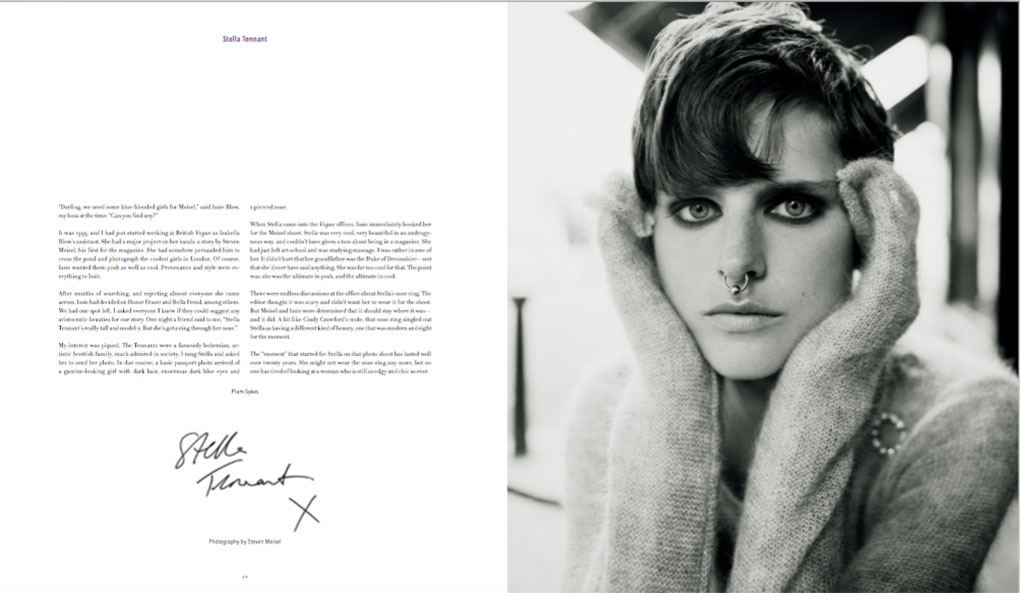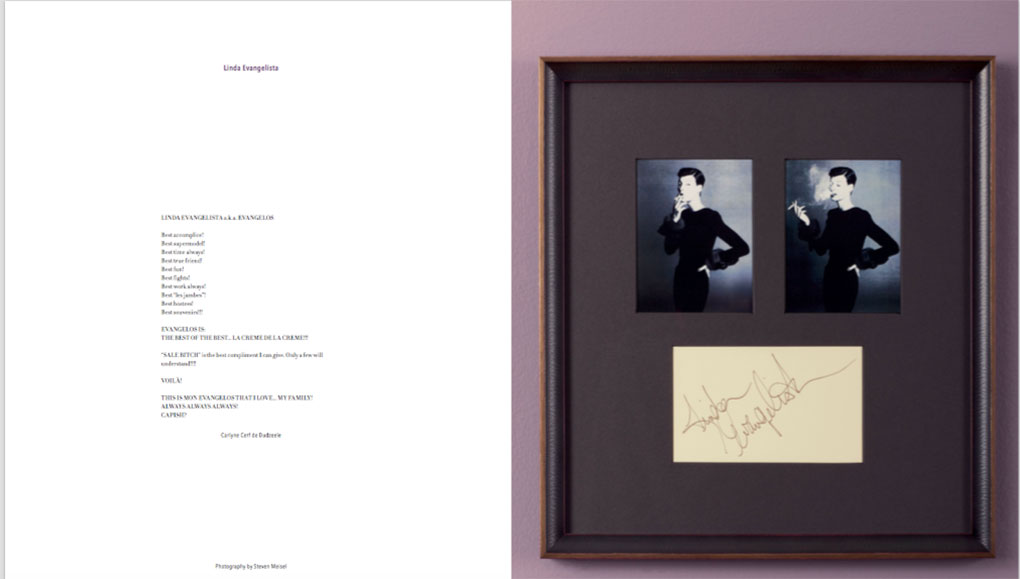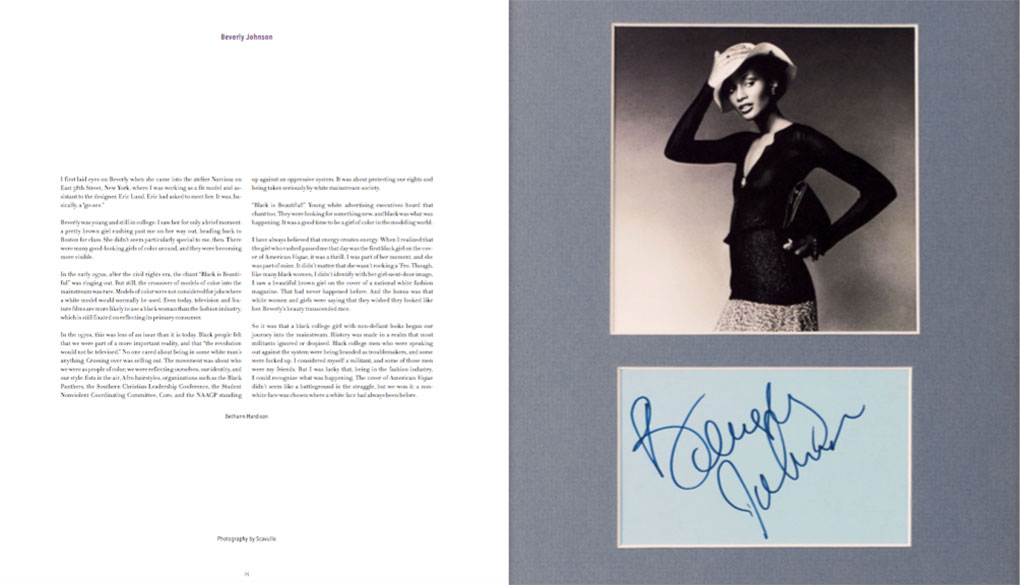It’s no secret that Models.com has an affinity towards people who pose so imagine our elation when we heard that someone else had the same admiration of the faces of the industry as much as we do! Such was the scene last night at Christopher Niquet‘s book signing at West Village staple, Bookmarc, for his latest published effort, Models Matter. We spoke to the newly minted author about his fascination with model history, writing process, and for an intimate breakdown of his favorite model muses of past and present.
Why did you want to make this book?
Beside books written by models (recently Cindy Crawford’s Becoming is a great example) most books on models are really bad. They just focus on the finished image, the fantasy. I have always loved how Diana Vreeland had this section in the 1960s pages of Vogue called “Vogue’s Own Boutique” where models like Penelope Tree or Naomi Sims would take you to their favorite stores, art galleries, etc. You really got a glimpse of their life outside of modeling and I wanted to do a book where the personal as well as the work aspect of a model’s Life collided. Also, to highlight unusual beauties that have been real muses, the real sense of the word, not how we intend it today, to fashions greats.
How long has the creation process been for Models Matter?
The collecting aspect of the autographs took eight years and is still ongoing. There is still a few ladies I’d like to add to the collection. I have over 100 autographs and decided to focus on fifty for the book. Putting the book together took six months, which is a really short process to get the authorization from photographers and their estate as well as pairing each model with the right writer. It took a little bit of harassment to get the text on such a short schedule but everyone was extremely collaborative and efficient. I was also really lucky to work with Dave Schnapper for the design of the book and Allegra Huston who helped me edit all the writing. I wanted it to come out fast and for it to be affordable on top of hopefully being informative.
What were some of the most surprising anecdotes described in the book?
I love the text photographer David Montgomery wrote about Grace Coddington, describing the day he photographed her for Vidal Sassoon in their famous five point cut.
Joan Juliet Buck’s text about Lauren Bacall is wonderful as well; Bacall was a close friend of her mother and having her share some personal anecdotes about her was great.
And I just love Juergen Teller’s one about Claudia Schiffer, “Claudia, I just let her smoke”. I completely understand what he means. You know you are looking at Claudia, so there’s nothing to do, just let her smoke.
What do you think makes a model stand the test of time?
You can be a signifier of the times like what Twiggy means to the 1960s, Cheryl Tiegs to the 1970s, Katoucha to the 1980s, Cindy Crawford to the 1990s, Kate Moss to grunge. Their face becomes a representation of their times. They embody a moment that is beyond fashion.
Then there is longevity, which is just as if not more powerful. How wonderful is it that Pat Cleveland, Lauren Hutton, Carmen Dell’Orefice, Christy Turlington, Karen Elson, and Erin O’Connor are still modeling today? That we can see them age in the pages of magazines? That they still inspire photographers and editors and that they can still sell products for corporations? Real beauty and character do stand the test of time.
Stella!!! I was such a model fan as a teenager that when I saw a photo of her backstage at Chanel wearing a pair of cashmere socks worn with Birkenstocks, I wore the same for a whole winter. The effect was not quite what I expected…way more chic on her! And that is what was so great to me, she is the model that made street style and personal style cool. No one looked like her and that contrast made garments feel different and more interesting. I love that Plum Sykes could recant those memories on that first shoot of Stella with Steven Meisel for British Vogue. The modeling debut of Stella Tennant, nose ring and all.
What is there left to say about Linda Evangelista? During the whole supermodel mania there was Claudia, Cindy, Naomi, Christy and Linda and if your favorite was Linda, you were a true model lover. Of course she was beautiful, no one can deny the perfection of it all, but what transpired was a love of transformation and clothing that made you automatically understand that she was working at it. Maybe because she always presented a character and she forced you to think of her differently and for you to believe she was someone new each time.
And what else to say about Carlyne (Cerf de Dudzeele) who wrote the text? Carlyne is a real fashion icon because she has style and walks to the rhythm of her own Louis Vuitton, Chanel and animal printed brass band. I don’t think I have ever met someone whose passion for the true frivolous side of fashion (in believing, thank god, that clothing really does affect your mood and therefore why not feel good) is that deep.
Farida is a Parisian legend. Growing up in the late 1980s, she was the only representation of a Muslim woman, she was associated with all the best visual revolutionaries of the time: designer Azzedine Alaïa for whom she both modeled and ran their private couture departments; photographer Jean Paul Goude whose images are part of any French person my age DNA; Christian Louboutin with whom she was a regular figure at the legendary Palace nightclub, and now resurrected from its ashes, the house of Elsa Schiaparelli.
I was so happy when Carla Bruni agreed to write about her as they are good friends. I wanted to have the real side of her portrayed and focus on what makes her precious to her friends, past the strong and almost reductively strong images she has been shaped into.
Beverly Johnson was the first black woman on the cover of American Vogue so she had to be in the book. It was really important to get her photograph early in my autograph collecting process. Grace Mirabella not only put a black woman on the cover of Vogue but she used her like she would have used any other woman. Her whole magazine was about the working woman and for the first time a black woman wasn’t used under the false excuse of evoking something foreign. Beverly was every woman. Bethann Hardison’s text is wonderful because she looks at it both from the model she was then, hoping the first woman on the cover of Vogue would be strong and unapologetically black, and the woman she is now recognizing it for the achievement that it is.





